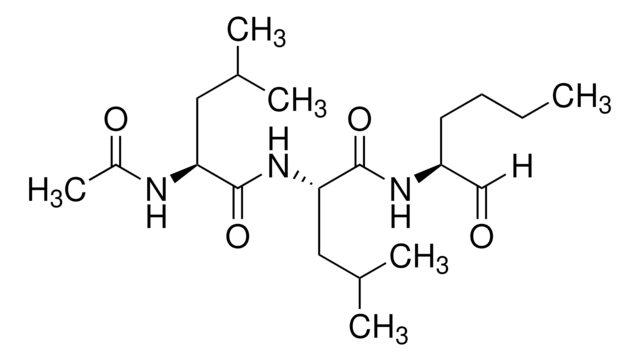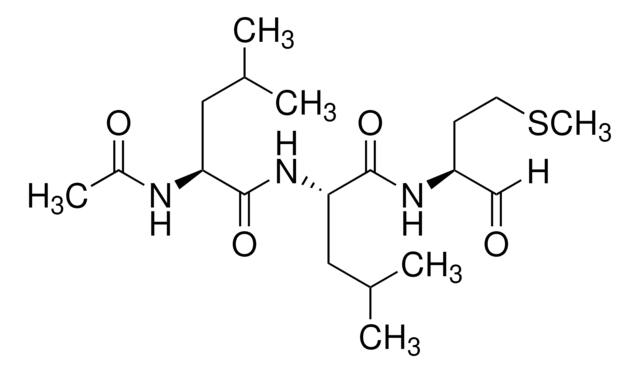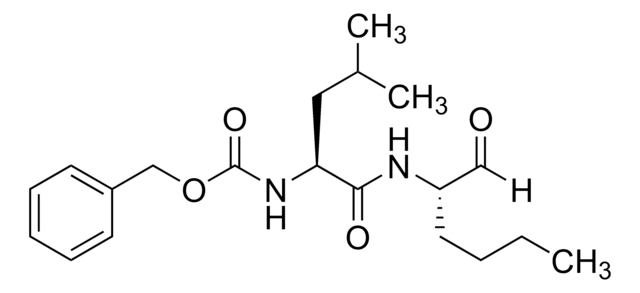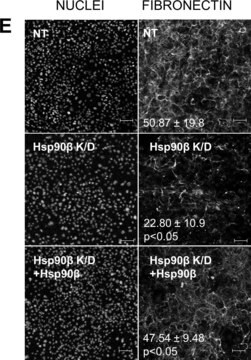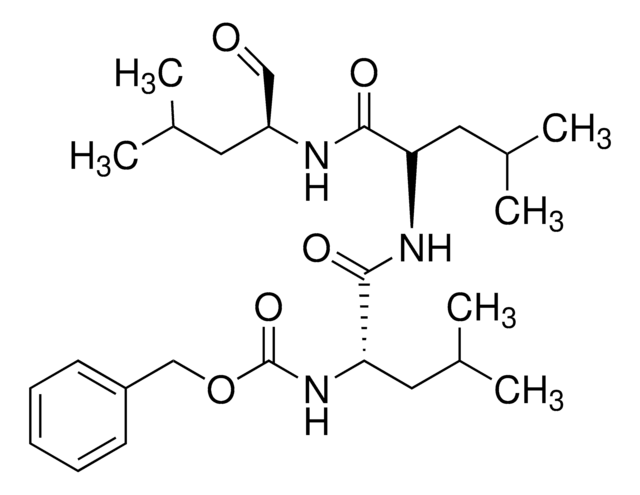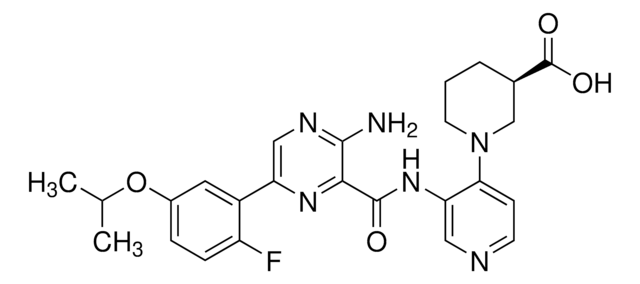11086090001
Roche
Calpain Inhibitor I
N-Acetyl-Leu-Leu-norleucinal, synthetic
Sinónimos:
Calpain Inhibitor I, n-acetyl-leu-leu-norleucinal, ALLN, Ac-LLnL-CHO, MG-101, N-Acetyl-L-leucyl-L-leucyl-L-norleucinal, N-Acetyl-Leu-Leu-Norleu-al
About This Item
Productos recomendados
Quality Level
assay
98% (chromatographically homogeneous)
form
powder
mol wt
Mr = 383.5
packaging
pkg of 25 mg
manufacturer/tradename
Roche
mp
182 °C
solubility
DMF: 10 mg/mL
ethanol: 10 mg/mL
methanol: 10 mg/mL
storage temp.
2-8°C
SMILES string
[H]C(=O)[C@H](CCCC)NC(=O)[C@H](CC(C)C)NC(=O)[C@H](CC(C)C)NC(C)=O
InChI
1S/C20H37N3O4/c1-7-8-9-16(12-24)22-19(26)18(11-14(4)5)23-20(27)17(10-13(2)3)21-15(6)25/h12-14,16-18H,7-11H2,1-6H3,(H,21,25)(H,22,26)(H,23,27)/t16-,17-,18-/m0/s1
InChI key
FMYKJLXRRQTBOR-BZSNNMDCSA-N
¿Está buscando productos similares? Visita Guía de comparación de productos
Categorías relacionadas
General description
Specificity
Application
Calpain Inhibitor I is used for western blotting methods.
Quality
Formula variant
Preparation Note
The suggested starting concentration is 17 μg/ml. This is the concentration at which half maximal inhibition of calpain I is observed.
Working solution: Recommended solvent is DMF, ethanol, or methanol up to 10 mg/ml.
Storage conditions (working solution): -15 to -25 °C
Solutions in DMF, methanol, ethanol are stable for 4 weeks at -15 to -25 °C.
Reconstitution
Other Notes
Storage Class
11 - Combustible Solids
wgk_germany
WGK 2
flash_point_f
Not applicable
flash_point_c
Not applicable
Certificados de análisis (COA)
Busque Certificados de análisis (COA) introduciendo el número de lote del producto. Los números de lote se encuentran en la etiqueta del producto después de las palabras «Lot» o «Batch»
¿Ya tiene este producto?
Encuentre la documentación para los productos que ha comprado recientemente en la Biblioteca de documentos.
Nuestro equipo de científicos tiene experiencia en todas las áreas de investigación: Ciencias de la vida, Ciencia de los materiales, Síntesis química, Cromatografía, Analítica y muchas otras.
Póngase en contacto con el Servicio técnico